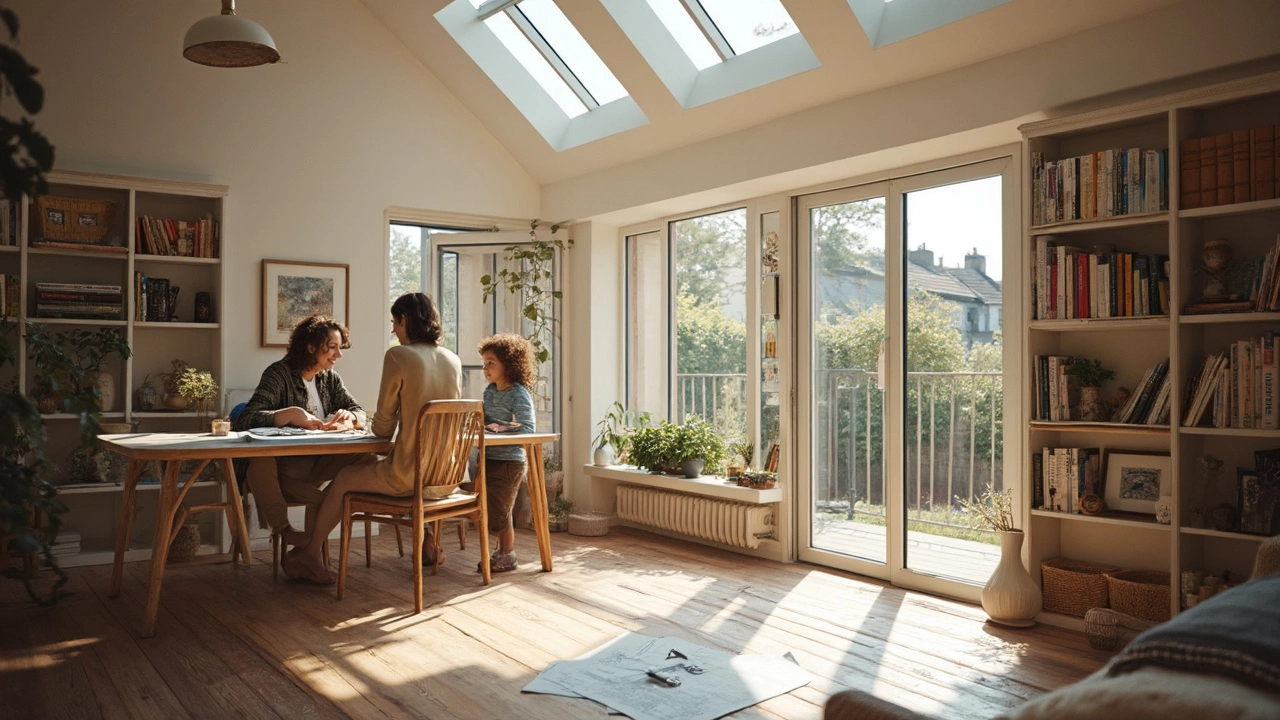Thinking about a loft conversion? This article breaks down what you can really gain, what to look out for, and how to decide if it's the right move for your home. You'll get straight facts on costs, returns, planning, and clever ways to make the most of your new space. Forget vague ideas—find out exactly how loft conversions work, what makes some jobs trickier, and tips to nail the process. If you want more space without moving house, start here.
Loft Design Made Simple: Tips You Can Use Right Now
Got a loft and wondering how to turn it into a livable, stylish area? You’re not alone. Many people struggle with the open‑plan feel, low ceilings, and uneven floors. The good news is you don’t need a designer’s budget to make it work. Below are easy ideas that give you instant impact without breaking the bank.
Start With a Clear Layout
The first step is to decide how you’ll use the space. Do you want a bedroom, a home office, or a cozy lounge? Sketch a rough floor plan on paper or use a free phone app. Mark where the stairs, windows, and any low‑ceiling spots are. Then place furniture where it won’t block natural light. A low‑profile sofa or a built‑in bench under the eaves often solves the height issue and adds seating without crowding the room.
Zone the loft with rugs or different ceiling treatments. A rug under the sitting area instantly tells the eye where that zone starts and ends. For a bedroom nook, a simple partition—think a folding screen or a bookshelf—creates privacy while keeping the open feel.
Light Up the Space
Lofts love natural light, but you’ll need extra layers for evenings. Install recessed lights or track lighting along the roof beams. They give even illumination without hanging down too low. Add a couple of floor lamps in the corners to brighten darker spots. If the loft has exposed brick or concrete, consider painting the walls a light neutral. That reflects light and makes the room feel larger.
Don’t forget task lighting for work areas. A desk lamp with an adjustable arm is cheap and does the job. For a relaxing vibe, use warm‑white bulbs on the main lights and add a dimmer switch. You’ll have control over the mood without buying new fixtures.
Storage is another big challenge in lofts. Use the space under the eaves for shallow cabinets or built‑in drawers. Floating shelves on the walls keep the floor clear and showcase décor items. If you have sloped ceilings, a tall wardrobe can fit snugly in the highest spot, making use of otherwise wasted height.
When it comes to décor, keep it simple. A few bold pieces—like a large piece of artwork or a statement rug—add personality without overwhelming the space. Choose a color palette of two main shades and one accent color. This coherence makes the loft feel put together even if it’s a DIY project.
Finally, think about comfort. Add a plush rug, some cushions, and a throw blanket to soften the industrial vibe. Plants work wonders too; a tall fiddle leaf fig or a hanging terrarium brings life and improves air quality.
By mapping out zones, layering light, and using smart storage, you can transform any loft into a functional, stylish haven. Try one tip at a time, see what clicks, and enjoy watching your loft evolve into a space you love to live in.
